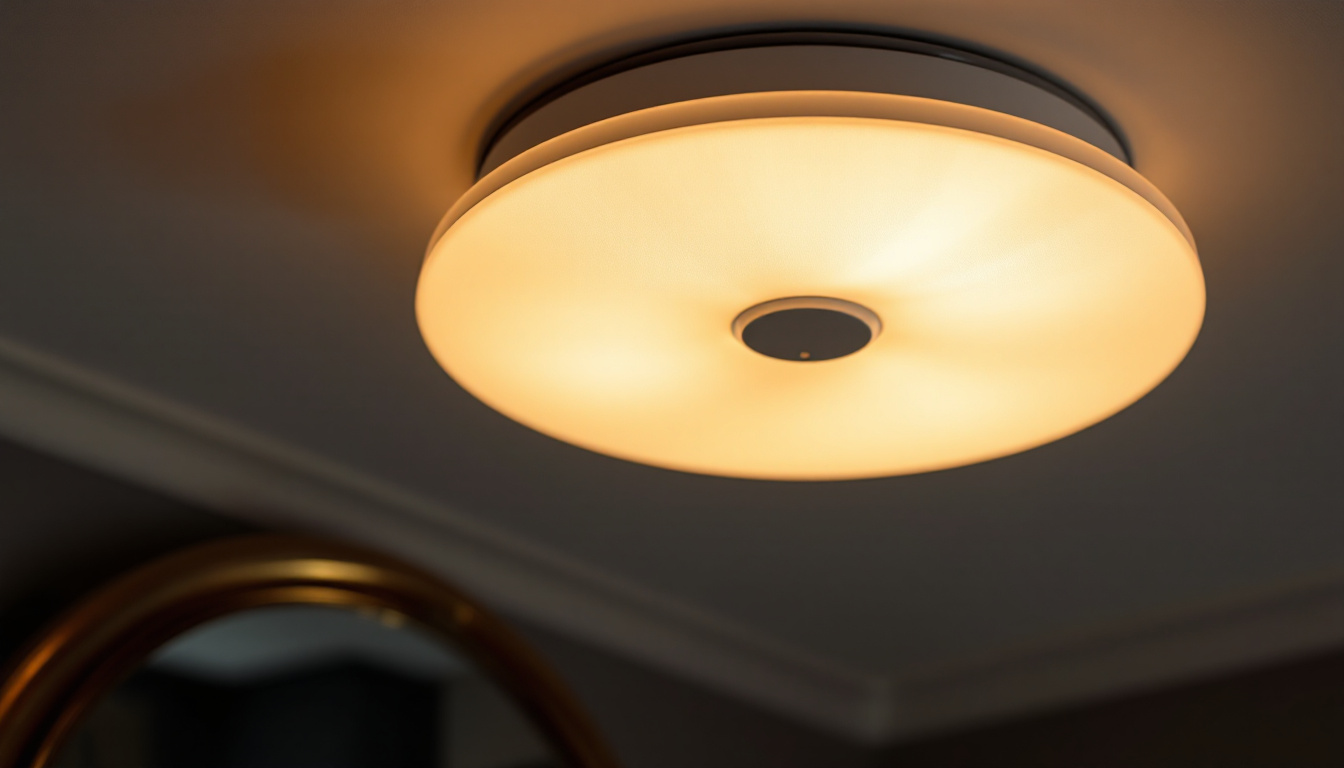
Lighting contractors play a crucial role in the design and implementation of effective lighting solutions. However, even the most experienced professionals can make mistakes when it comes to puck lights and their wattage. Understanding these common pitfalls can help avoid costly errors and ensure that installations meet both aesthetic and functional requirements. This article explores the common mistakes associated with puck lights and offers insights into how to avoid them.
Puck lights are versatile lighting fixtures that can be used in various applications, from kitchens to display cases. Their compact size and ease of installation make them a popular choice among homeowners and contractors alike. However, the wattage of these lights plays a significant role in their effectiveness and efficiency.
Puck lights are small, round fixtures that can be recessed or surface-mounted. They are typically used for task lighting, accent lighting, or to highlight specific areas within a space. Their design allows for flexibility in placement, making them suitable for both residential and commercial settings. In addition to their aesthetic appeal, puck lights are often available in a variety of colors and finishes, allowing them to seamlessly blend into any decor style. From sleek chrome to warm bronze, these fixtures can enhance the overall ambiance of a room while providing functional lighting.
The wattage of a puck light determines its brightness and energy consumption. Selecting the appropriate wattage is crucial for achieving the desired lighting effect while maintaining energy efficiency. Too low a wattage may result in insufficient illumination, while too high can lead to excessive energy use and potential overheating. Moreover, with the advent of LED technology, many puck lights now offer lower wattage options that provide the same level of brightness as traditional incandescent bulbs, thus reducing energy costs and extending the lifespan of the fixtures. This shift not only benefits the environment but also allows homeowners to enjoy stylish lighting solutions without sacrificing efficiency.
Choosing the right puck lights involves more than just picking a style. Many contractors fall into common traps that can lead to unsatisfactory results. Awareness of these mistakes can enhance the quality of the lighting installations.
One of the most significant mistakes contractors make is not considering the purpose of the space where the puck lights will be installed. Different areas require different lighting levels. For instance, a kitchen may need brighter, task-oriented lighting, while a bedroom may benefit from softer, ambient light.
Before selecting puck lights, it is essential to assess the specific needs of the area. Understanding the intended use will guide the choice of wattage and placement, ensuring that the lighting serves its purpose effectively. For example, in a home office, adequate lighting can reduce eye strain and improve productivity, while in a living room, a warm glow can create a cozy atmosphere for relaxation. Evaluating the activities that will take place in each room can help in determining the optimal lighting configuration.
Another common oversight is neglecting the dimming capabilities of puck lights. Many modern puck lights come with dimmable options, allowing for greater flexibility in lighting design. Failing to consider dimming can limit the versatility of the lighting scheme.
In spaces where mood and ambiance are essential, such as dining areas or home theaters, the ability to adjust brightness can significantly enhance the overall experience. Contractors should evaluate whether dimming is necessary and choose compatible puck lights accordingly. Additionally, integrating smart home technology can further elevate the lighting experience, enabling users to control brightness levels through their smartphones or voice commands. This modern approach not only adds convenience but also allows for personalized lighting settings tailored to individual preferences.
In an era where energy efficiency is a priority, many contractors still overlook the importance of selecting energy-efficient puck lights. Traditional incandescent bulbs consume more energy and have a shorter lifespan compared to LED options.
By opting for LED puck lights, contractors can provide clients with a sustainable lighting solution that reduces energy costs and minimizes environmental impact. Understanding the wattage equivalence between different types of bulbs can help in making informed decisions. Moreover, energy-efficient lighting can contribute to LEED certification for green building projects, appealing to environmentally conscious clients. It is also worth noting that many utility companies offer rebates for energy-efficient lighting installations, which can provide additional savings for homeowners. This not only enhances the value of the installation but also encourages a more sustainable approach to home lighting.
Even with the right puck lights selected, improper installation can lead to poor performance and dissatisfaction. Here are some common installation mistakes to watch out for.
Placement is critical when it comes to puck lights. Installing them too far apart can create uneven lighting, while placing them too close can result in harsh shadows and glare. It is essential to plan the layout carefully, taking into account the size of the space and the intended lighting effect.
A general rule of thumb is to space puck lights about 24 to 36 inches apart, depending on their wattage and the brightness required. Testing the layout with mock installations can help visualize the final outcome before making permanent decisions. Additionally, considering the height at which the lights are installed can significantly impact their effectiveness. For instance, mounting lights too high may diminish their ability to illuminate surfaces adequately, while placing them too low can create an unflattering ambiance. Therefore, it’s advisable to evaluate both horizontal and vertical placements to achieve the desired lighting effect.
Wiring is a fundamental aspect of any lighting installation. Contractors sometimes overlook the importance of ensuring that the wiring is adequate for the wattage of the puck lights being used. Insufficient wiring can lead to flickering lights, overheating, or even electrical hazards.
Before installation, it is crucial to assess the existing wiring and make necessary upgrades if needed. This attention to detail will not only enhance the safety of the installation but also improve the overall performance of the lighting system. Additionally, using the right gauge of wire is essential to prevent voltage drop, which can affect the brightness and longevity of the lights. It is also wise to consider the use of dimmer switches, as they can provide flexibility in lighting levels and contribute to energy savings. Ensuring that all wiring meets local electrical codes will further safeguard against potential issues down the line.
Finalizing an installation without testing the lights is a common mistake that can lead to dissatisfaction. Testing the puck lights after installation allows contractors to evaluate brightness levels, color temperature, and overall effectiveness.
It is advisable to conduct a thorough inspection and make adjustments as needed before considering the job complete. This step ensures that the client is satisfied with the end result and that the lighting functions as intended. Moreover, it can be beneficial to involve the client in the testing process, allowing them to see the lighting effects firsthand and provide feedback. This collaborative approach not only fosters trust but also helps to identify any areas that may require further adjustment, ensuring that the final installation meets or exceeds their expectations. Additionally, documenting the testing results can serve as a valuable reference for future projects, helping to refine installation techniques and improve overall efficiency.
Wattage ratings can be confusing, particularly with the variety of options available on the market. Understanding how wattage affects performance is crucial for making informed choices.
The wattage rating of a puck light indicates the amount of energy it consumes. However, it is essential to note that wattage does not directly correlate to brightness. Instead, lumens are the measure of brightness, while wattage reflects energy use.
For example, an LED puck light may use only 5 to 10 watts but can produce the same amount of light as a traditional 50-watt incandescent bulb. Understanding this distinction can help contractors recommend the most energy-efficient options to clients.
When selecting wattage for puck lights, it is essential to consider the specific application. For task lighting, higher wattage may be necessary to provide adequate illumination. Conversely, for accent lighting, lower wattage can create a more subtle effect.
Consulting with manufacturers or utilizing lighting design software can assist contractors in determining the appropriate wattage for various applications. This proactive approach can prevent common mistakes and enhance the overall quality of the lighting design.
Effective communication with clients is vital in ensuring that their expectations align with the lighting solutions provided. Educating clients about puck lights and their wattage can prevent misunderstandings and dissatisfaction.
Contractors should take the time to explain the capabilities and limitations of puck lights to clients. Many clients may have preconceived notions about brightness and energy use, leading to unrealistic expectations.
By providing clear information about how wattage affects performance, contractors can help clients make informed decisions. This transparency fosters trust and enhances the overall client experience.
Once the installation is complete, offering maintenance tips can further enhance client satisfaction. Educating clients on how to care for their puck lights, including cleaning and bulb replacement, ensures longevity and optimal performance.
Providing a simple maintenance guide can empower clients to take an active role in the upkeep of their lighting systems, leading to greater satisfaction with the installation.
Understanding the common mistakes associated with puck lights and their wattage is essential for lighting contractors aiming to deliver high-quality installations. By considering the purpose of the space, selecting the appropriate wattage, ensuring proper installation, and maintaining open communication with clients, contractors can avoid pitfalls and enhance their reputation in the industry.
By staying informed about the latest trends and technologies in lighting, contractors can provide innovative solutions that meet the evolving needs of their clients. Ultimately, a commitment to excellence in every aspect of the lighting design process will lead to successful outcomes and satisfied customers.
Ready to avoid the common pitfalls of puck light installation and elevate your lighting game? At LumenWholesale, we provide lighting contractors with the highest quality, spec-grade lighting products at prices that can’t be beaten. Say goodbye to local distributor markups and hello to a vast selection of reliable lighting solutions that meet rigorous industry standards. With the added benefits of free shipping on bulk orders, LumenWholesale is your go-to source for premium lighting without the premium price tag. Don’t compromise on quality or value; choose LumenWholesale for your next project. Wholesale Lighting at the Best Value awaits you.

Discover the essential insights and innovative trends that every lighting contractor should be aware of in the ever-evolving world of illumination.

Discover expert insights into the world of flush mount lamps with our guide on lighting contractors’ best practices.

Discover the must-have tools for lighting contractors to efficiently install hanging ceiling lights.

Discover why purchasing flat panel lights in bulk from local distributors might not be the best choice.